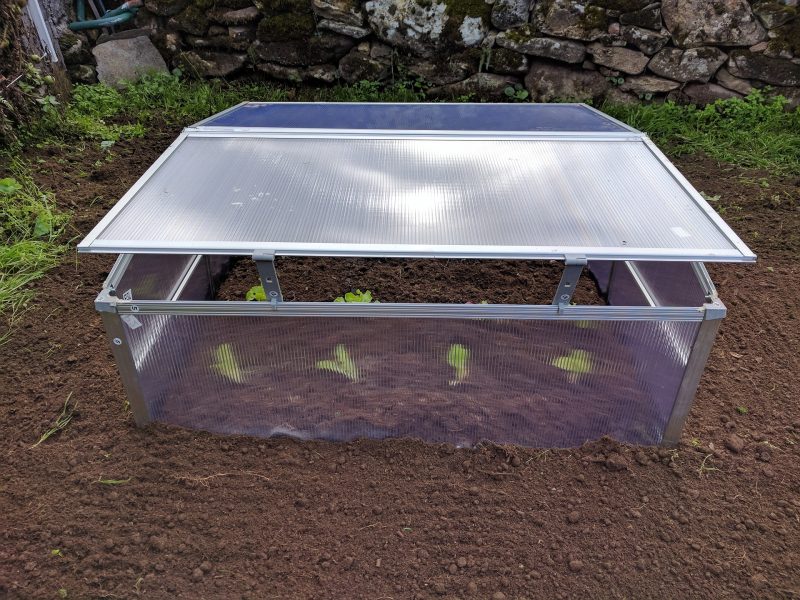Getting informed on what temperature should I keep vegetable plants in the small greenhouse is a good question from each gardener. First and foremost, the mini greenhouse refers to the greenhouse that will let you expand the plant growth season beyond the usual timeframe.
It protects the seedling when the so-called ambient temperature changes and decreases further down and overnight. It is the task of the greenhouse to conserve the heat, allowing the soil to keep moist and hydrated, and thus, protecting the garden from animals and pests. The best ones also temper weed growth in the greenhouse.

The Ideal Temperature In The Small Greenhouse
With this being said, what temperature should I keep vegetable plants in the small greenhouse? Remember that the warm, direct light from the sun is not needed for your crops in the category of the cool season. Vegetables in the warm season category, which include peppers as well as cucumbers, can thrive in the daytime temperature in the greenhouse at 29 degrees Celsius in the day and 18 degrees Celsius at night.
However, your warm-season crops or vegetables require brighter lighting.
How Cold Can Plants Tolerate In A Greenhouse?
Your crops in the greenhouse may be subdivided into three different categories. These are:
- Cold-tolerant vegetables
- Cold-temperate vegetables
- Cold-sensitive vegetables
Cold-Tolerant Vegetables
These veggies are crops with the base range of temperature at four degrees Celsius and are required to be grown with the average temperature daily at 18 degrees Celsius.
Cold-Temperate Vegetables
It may be difficult to determine their characteristics from the name alone, but you fairly have the idea, right? Cold temperate veggies are those with the base range of temperature of seven degrees Celsius and generally at the ADT of 21 degrees Celsius.
Cold-Sensitive Vegetables
Your cold-sensitive crops are those with eight degrees Celsius or even higher and are cultivated at the ADT of 24 degrees Celsius at the most.
When thinking about managing the temperature at the greenhouse, it is significant to take into account how the growth of the plants, as well as the way they develop, are influenced by the various growth stages. They constitute:
- Germination of seeds
- Vegetative stage
- Reproductive phase
- Ripening of the plant or crop
The optimum temperature of the plant can change when it grows from the seedling toward maturity. In general, germinating seeds and early growth of the seedling happen rapidly in warmer climates that may usher into respiration and photosynthesis.
You can also favor this with temperatures and growth among younger plantations since there seems to be less tissue by the roots and stem when in comparison with the rest of the plants.
How Do I Protect My Plants In An Unheated Greenhouse?
You have encountered the bubble wrap in many gardening tips, and this is exactly what you need to use when layering what’s inside the greenhouse. The sunlight required is still part of it, but this layer to protect shall keep the plantation safe during the night.
Chances are great when the greenhouse unheated offers the simplest hoop structure type or the cold frame. This is one way you can protect the plants when the greenhouse is unheated.
Moreover, what kinds of protection are present with the heaters? Aside from the bubble wrap, what you can do is to add one to two layers of the fleece on the crops. And after this, you can add the wrap around the pots to help with the insulation and prevent the clay containers from cracking down.
You can also layer the bubble wrap within the greenhouse. The sunlight you need can come through, but the additional protective layer will be present to keep the crops safer during the night.
What Temperature Should A Greenhouse Be At Night?
An interesting question we have here, and the answer shall help you get better crops too. In any greenhouse, may this be your commercial greenhouse or the mini greenhouse, the ideal temperature should be at 24 degrees Celsius at night (32 degrees Celsius in the daytime).
For the vegetables, it depends on the crop type but growing the crops at the lower range can provide optimal results. Plants can offer more branches and floral buds compared with the plants that have grown in warmer temperatures.
Conclusion
Gardening should be fun and easy. If there are obstacles along the way, there are tools and advice that can help you move forward.
The mini garden or the small greenhouse is among the most lucrative greenhouses that can house many herbs, veggies, and berries. You can also cultivate here several herbs, cabbage, cauliflowers, cabbage, beets, onions, radish, and more. The limitations are with your spaces. On the other hand, you can also take more control over the farm-to-table crops that you want to get onto your table with the steps.
The crops can produce the healthiest recipes, and you can also pursue them in the market for profiteering.
What temperature should I keep vegetable plants in the small greenhouse? Ventilation is also part of the procedure. Keep on viewing our blog right here for more of the tips. Do your homework and research on the information you need to manage your greenhouse well.
